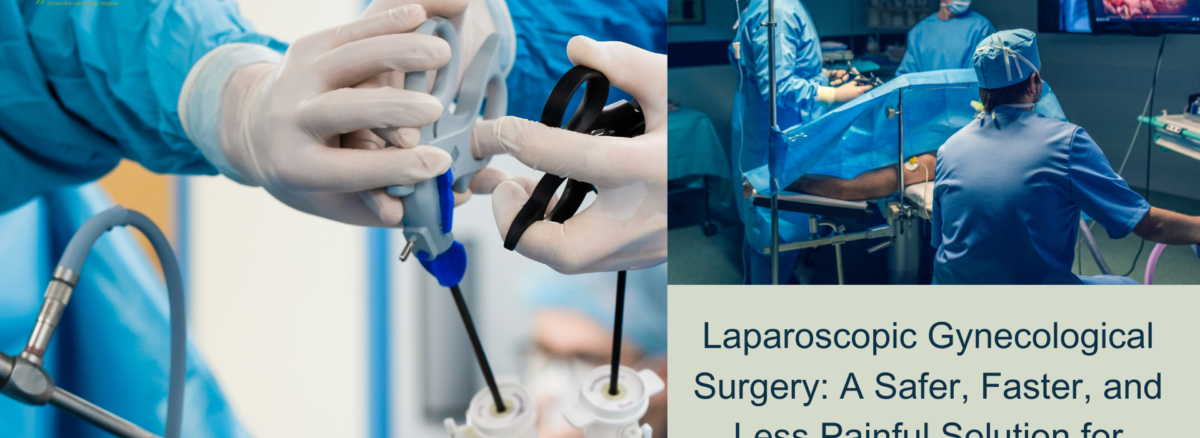When it comes to women’s health, modern medicine has brought us incredible advances—and laparoscopic gynecological surgery is one of the most revolutionary. This minimally invasive technique is transforming care for conditions like fibroids, endometriosis, ovarian cysts, and more, offering women faster recovery, less pain, and excellent outcomes compared to traditional open surgery.
What Is Laparoscopic Gynecological Surgery?
Laparoscopy uses tiny incisions—usually less than a centimeter each—instead of a large cut. Through these small openings, surgeons insert a thin camera and delicate instruments to see and treat problems inside the pelvis. The camera sends a clear view to a monitor, so doctors can work with great accuracy and minimal disruption to surrounding tissues.
Why Choose Laparoscopy? Top Benefits for Women
Quicker Recovery: Most women can return home the same day and get back to normal life much faster than with open surgery, which often requires several weeks of downtime.
Less Pain: Smaller incisions mean less discomfort after surgery, so you often need fewer pain medications and feel better sooner.
Minimal Scarring: Laparoscopic surgery leaves only tiny marks, which fade over time—so you won’t have the large scar typical of open operations.
Lower Risk of Infection: Smaller wounds mean fewer complications, so the chance of infection or bleeding drops significantly, making recovery even safer.
Reduced Blood Loss: Precision instruments used in laparoscopy result in less bleeding and less need for transfusions.
Daycare Procedure: Many laparoscopic surgeries are “daycare” procedures; patients go home within hours and experience minimal disruption to family life.
Preservation of Ovaries: In suitable cases, surgeons can treat issues while preserving healthy ovarian tissue, important for younger women or those hoping for future pregnancies.
Common Conditions Treated
- Uterine fibroids and polyps
- Endometriosis
- Ovarian cysts
- Blocked fallopian tubes
- Pelvic adhesions and chronic pain
- Ectopic pregnancy
- Mild gynecologic cancers (in selected cases)
The Patient Experience: What to Expect
Before surgery, the care team will walk you through preparation, including any lab work or fasting instructions. The operation is performed under anesthesia, so there’s no pain during the procedure. Most surgeries last 1-2 hours. Afterward, a short stay in recovery is typical, and most women feel up well enough to go home the same day or after a one-night stay.
Some mild soreness or bloating is common for a few days. Light activities can usually resume within a week, while strenuous exercise should wait until the doctor gives the green light. Following all discharge instructions and attending follow-up visits helps ensure a smooth recovery.
Are There Any Risks?
Laparoscopic surgery is very safe in experienced hands, but—as with any procedure—minor risks exist, such as infection, bruising, or temporary discomfort at incision sites. Rarely, injuries to bladder, bowel, or nearby vessels can occur, or the doctor may need to switch to an open operation for safety. These complications are extremely rare and are discussed thoroughly beforehand so women feel empowered and informed.
Conclusion
Laparoscopic gynecological surgery represents a major leap in women’s healthcare—enabling safer, quicker, and far less painful solutions for many common conditions. With minimal scarring, faster recovery, and enhanced safety, women can now focus on healing and returning to life with confidence.
If you’re struggling with gynecological symptoms, discuss laparoscopic surgery with your specialist to see if it’s right for you. Modern gynecology is all about comfort, precision, and care.
Frequently Asked Questions
Q1: Is laparoscopic surgery always possible?
Most gynecological conditions can be managed with laparoscopy, but very large tumors or certain complex cases may still require open surgery. Your gynecologist will help decide the best approach for your safety and success.
Q2: Will I have visible scars?
Only tiny scars remain, which fade with time and are generally hidden below the underwear line.
Q3: How long does recovery take?
Women typically resume light activities in a few days and return fully to normal life within 7-14 days, much faster than with open surgery.
Q4: Is laparoscopic surgery painful?
Pain is usually significantly less than after open surgery, and most women manage well with mild oral medication.
Q5: Are there long-term effects?
Most women have excellent long-term outcomes. Risks are low, and precision surgery preserves as much healthy tissue as possible.

